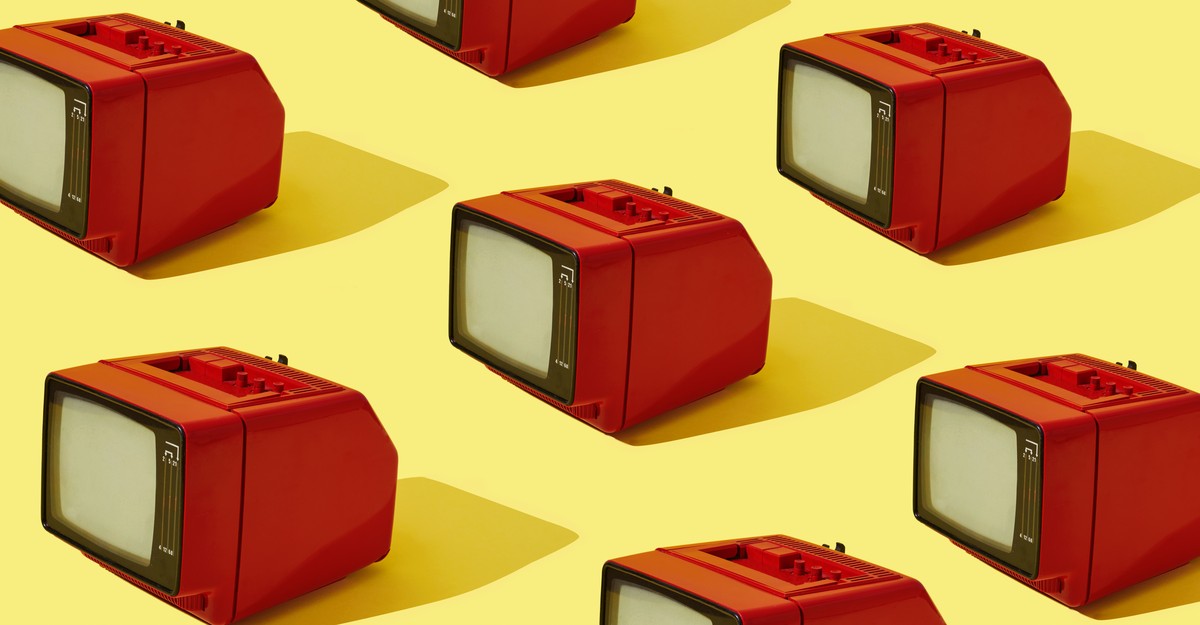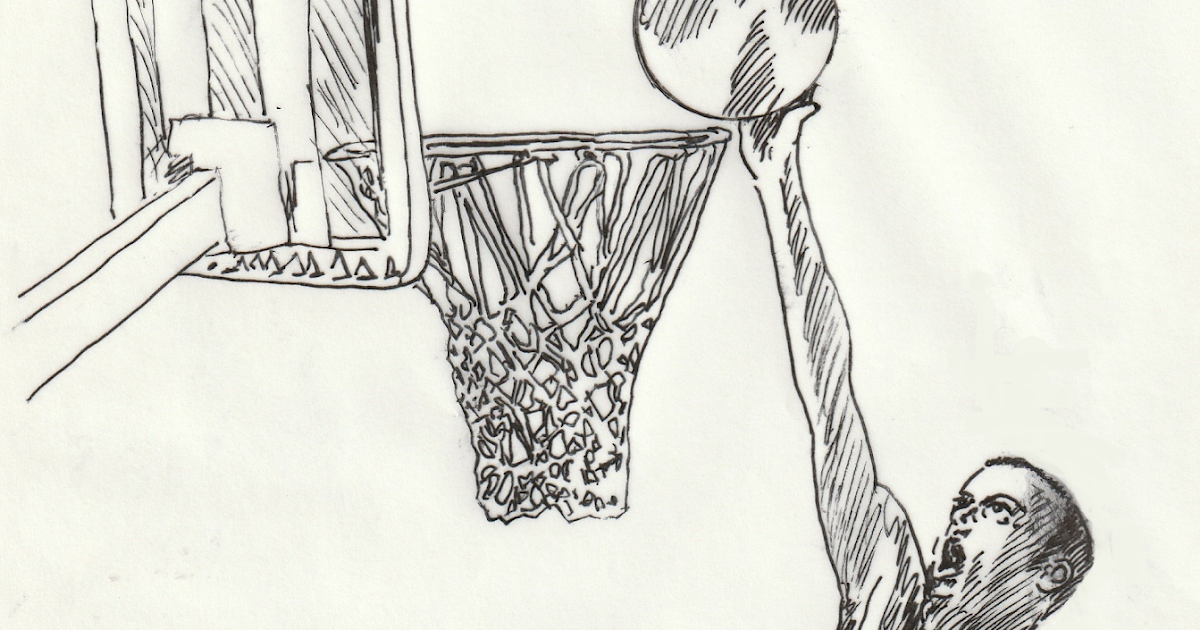This is an edition of The Atlantic Daily, a newsletter that guides you through the biggest stories of the day, helps you discover new ideas, and recommends the best in culture. Sign up for it here.
One by one, most of the major streaming services have introduced ads to their subscription offerings. Now consumers face a choice: Pay up, or sit through commercial breaks like it’s 1999.
First, here are three new stories from The Atlantic:
The Ads Era
I’m old enough to remember the days when you could stream an episode of television without being interrupted by ads for laundry detergent or car insurance. Okay, those days still exist. But they are no longer the norm, as they were even a few years ago. In recent years, Netflix and Disney+ implemented ad-based subscription tiers after executives said they wouldn’t. And yesterday, Amazon joined the club: Amazon Prime subscribers, all of whom previously received ad-free streaming, now must pay an extra $2.99 a month to watch without commercials. Streaming television, which originally differentiated itself from cable and broadcast TV by offering ad-free programming for a fee, is now officially in its ads era.
In many ways, Amazon’s move is intuitive. When I asked Brad Adgate, a longtime media analyst, about the company’s decision to introduce commercials, he put it simply: “Why not?” At this point, almost all of the other major streaming platforms have incorporated ads, so viewers are accustomed to either ponying up for higher-priced subscriptions or accepting ad interruptions. Amazon is particularly well positioned to generate revenue through such a model, Adgate noted: The site already has tons of data on people’s shopping preferences. Streaming ads also open up the option to direct people toward products to buy, which could be a selling point for advertisers. Plus, Amazon has already explored ventures into ad-based programming such as Freevee—and it has a huge number of Prime subscribers. “All the pieces are there,” Adgate told me. “All they had to do is connect the dots.”
When streamers raise prices, they always do so at the risk of making people mad. Some customers have been telling reporters that they are canceling their Prime subscription. But their annoyance is not likely to affect the company’s bottom line: Analysts are projecting that the changes will generate billions of dollars in revenue for Amazon. If viewers pay for the ad-free tier, that’s $3 more per person; if they opt not to upgrade, Amazon can make money by showing them ads.
Streaming reshaped the ways that shows are structured; to accommodate bingeing, creators often write with a focus on cohesive seasons rather than on individual episodes, and they’ve become less tethered to act-based structures with natural breaking points for ads. But as the industry struggles to mature, pieces of the old TV logic may creep back in. Some in Hollywood are concerned about these changes: Lulu Wang, whose new show Expats premiered on Amazon Prime Video last week, told The Hollywood Reporter that if she had known about Amazon’s decision to incorporate ads, she “would’ve created in a different way, because it’s not a show that has cliff-hangers or commercial breaks to make sure people come back.”
As James Poniewozik wrote in The New York Times last year, “TV-like practices seem to be returning out of the sheer dollars-and-cents realization that the business is not limitless.” In the early days of streaming, Adgate told me, part of the appeal of a site such as Netflix was its lack of ads. But as the costs of producing high-quality content went up, and streaming companies scrambled to turn a profit, even the advertising holdouts eventually caved. In 2015, for example, Netflix CEO Reed Hastings said, “No advertising coming onto Netflix. Period.” In 2022, Netflix added a cheaper subscription tier with ads.
Streaming platforms’ recent transition gets at a tension undergirding life online: Who is paying for all of this? The internet was constructed, somewhat shakily, on a foundation of ads. Consumers came to expect free content in exchange for being served ads—as the old adage goes, “If you’re not paying for the product, you are the product.” Now consumers face a choice: Would you rather be served ads, or pay more to avoid them? Even critics of the proliferation of ads acknowledge that people may simply not be willing or able to buy a subscription to every single thing they use online. So streaming moves further in the direction of the internet: ever beholden to the power of the ad.
Related:
The Trump Trials
In E. Jean Carroll’s defamation case against Donald Trump, “nine regular people in New York, picked at random, meted out justice to a man who had been president of the United States,” George T. Conway III wrote today.
Sign up for The Trump Trials, a newsletter in which Conway chronicles the former president’s legal troubles.
Today’s News
- The House Homeland Security Committee held a hearing today that pushes forward the Republican-led effort to impeach Homeland Security Secretary Alejandro Mayorkas, who is accused of disregarding federal immigration laws.
- President Joe Biden said that he holds Iran responsible for supplying the weapons used in the drone attack that killed three U.S. service members in Jordan; he also confirmed that he has decided on a response, but did not provide specifics.
- Ousted former Pakistan Prime Minister Imran Khan was sentenced to 10 years in prison for leaking state secrets.
Evening Read
Why Can’t I Just Rent a House?
By Olga Khazan
“Why not just rent?” is a question I’ve asked myself (and my husband, and our real-estate agent) many times over the past couple of years, as we’ve tried and failed to sell our house and buy a new one. After a long day of touring gross, overpriced homes that would require thousands of dollars of renovation, all for double the interest rate we have now, I’d mutter, Why don’t we just rent a house instead of buying one of these dumps? Every time, they reacted like I’d suggested we live on an ice floe in the middle of the North Sea. Rent?
It turns out that deep cultural, regulatory, and financial incentives prod Americans toward the “homeownership ladder” and, once they’re on it, discourage them from hopping off. Although renting is often not any financially or psychologically worse than owning—in fact, it might be quite the opposite—renting after owning is just not something most Americans want to do.
More From The Atlantic
Culture Break

Watch (or walk out). Sasquatch Sunset, an absurdist film that chronicles the lives of four Bigfoots, is a crowd-upsetting test of endurance. “I counted more than a dozen walkouts, several of them occurring after the defecation montage,” writes Shirley Li, who saw the film at Sundance.
Wonder. These new galactic images from NASA’s James Webb Space Telescope show incredibly detailed views of spiral galaxies.
P.S.
I’m rewatching 30 Rock right now. I first watched the show on NBC, when it came out every Thursday night, and I sat through all of the commercial breaks. Now I stream it on Peacock, and sit through ad breaks once again. I can watch the show whenever I want, which is a big difference. But otherwise, for all the tumult and changes of the past decade-plus in television, it’s ended up being basically the same experience.
Also, unrelated, but this obituary of the Broadway performer Chita Rivera captures an amazing life. I recommend it for your evening reading.
— Lora
Stephanie Bai contributed to this newsletter.
When you buy a book using a link in this newsletter, we receive a commission. Thank you for supporting The Atlantic.



